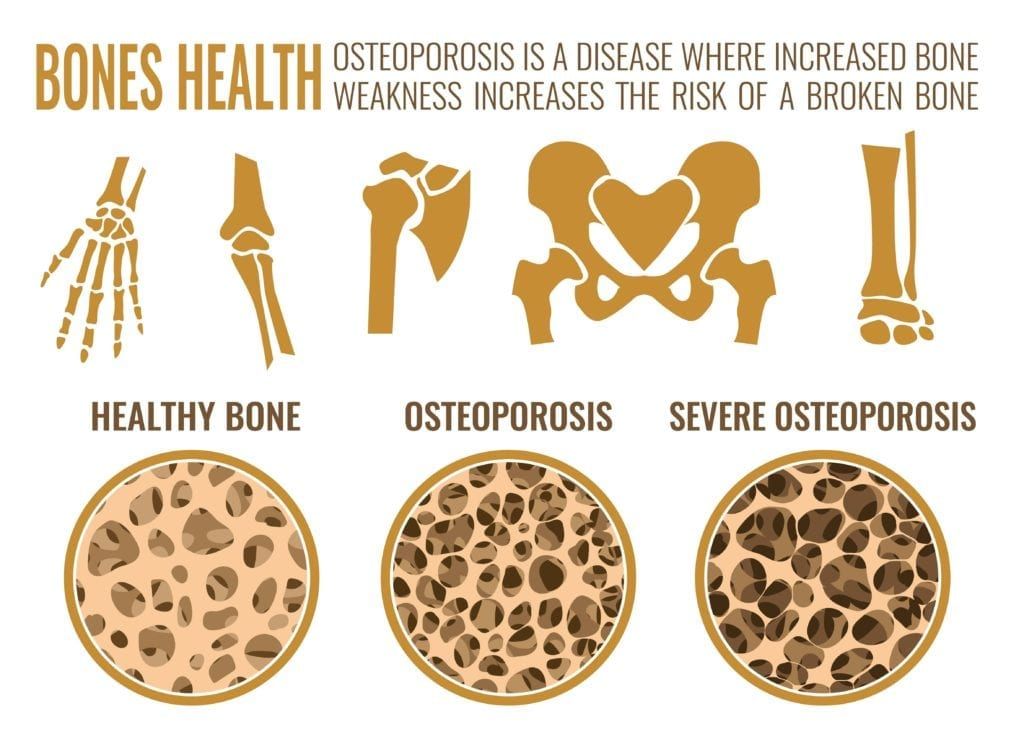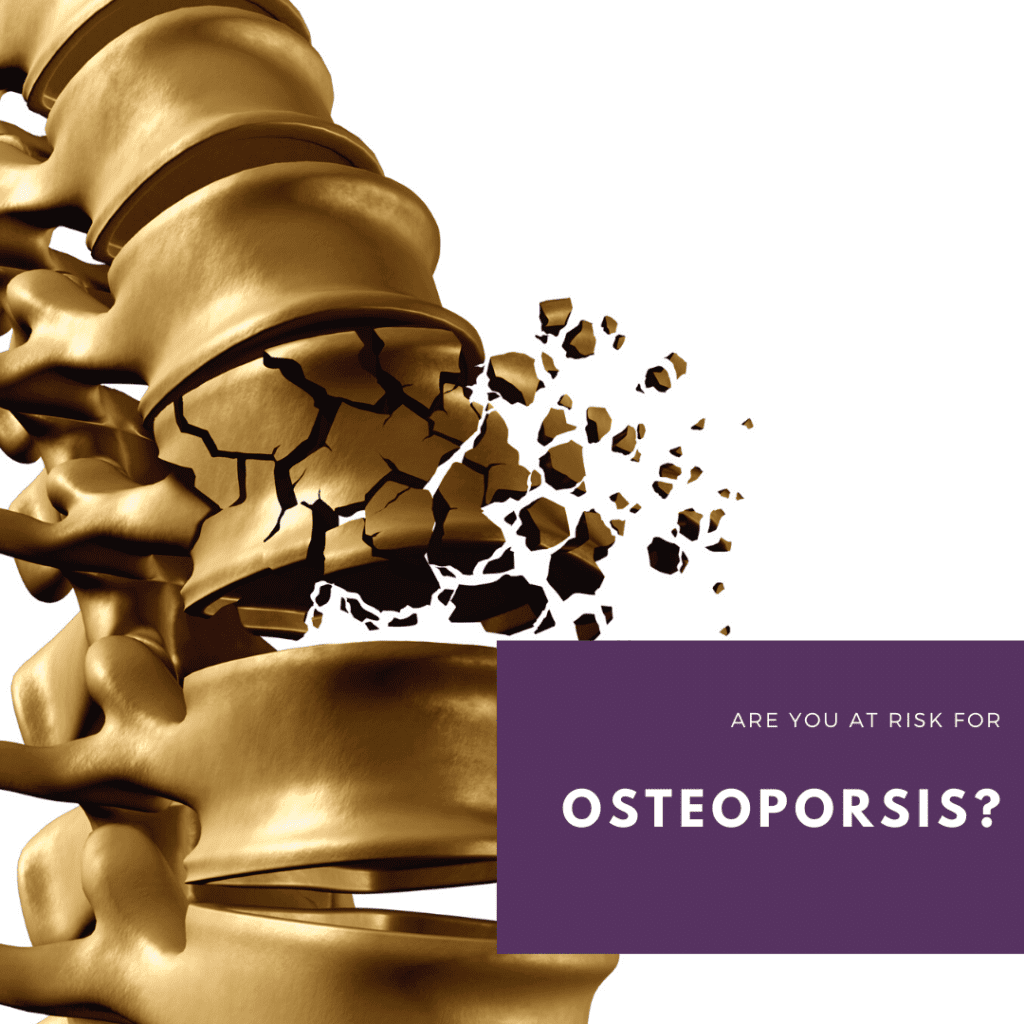According to the National Osteoporosis Foundation, a woman’s risk of breaking a hip due to osteoporosis is equal to her risk of developing breast, ovarian, and uterine cancer combined. In fact, as many as 1 in 2 women will break a bone due to osteoporosis. Although many people think brittle bones are a natural part of aging, osteoporosis is actually a disease characterized by losing too much bone, making too little bone, or a combination of both.
Women are at a higher risk than men of developing osteoporosis due to their natural body structure. Generally speaking, women’s bones tend to be thinner than men’s bones, which means they have less bone to lose. Additionally women usually live longer than men, which is another reason why they tend to develop osteoporosis at a higher rate.

In addition to gender, there are also other risk factors for osteoporosis such as:
- Age: bone density peaks at the age of 30, then starts to decrease. Women over the age of 50 are more likely to develop osteoporosis.
- Family history of osteoporosis: women whose parents or grandparents had the disease are more likely to develop osteoporosis themselves.
- Low body weight: women that are small-boned and thin have an increased risk of developing osteoporosis since they have less bone to lose.
- Past broken bones: bones that have fractured before may be weaker and more susceptible to developing osteoporosis.
- Ethnicity: Caucasian and Asian women are more likely to develop osteoporosis.
- Taking certain medications: taking steroids for an extended period of time can increase the risk of osteoporosis
Unfortunately, the aforementioned risk factors cannot be controlled, with the exception of possibly changing medications. Therefore, it is important to focus on the things that you can control to reduce the risk of developing osteoporosis. Here are some ways to minimize your risk:

- Get enough calcium and vitamin D: Calcium is an essential mineral for strong bones, while vitamin D is essential for calcium to be absorbed by the body. Unfortunately, many women are vitamin D deficient, meaning that they don’t get enough dietary vitamin D. this can minimize the amount of calcium absorbed by the body, which can increase the risk of osteoporosis.
- Eat plenty of fruits and vegetables: Fruits and vegetables contain a number of important nutrients that support your overall health and decrease your risk of osteoporosis. At a glance, fruits and vegetables that contain vitamin D, vitamin C, vitamin K, potassium, magnesium, and omega 3s are especially important.
- Be active: people who live a sedentary lifestyle are more likely to develop osteoporosis, so it is important that you get enough exercise. Even just walking for 30 minutes a day is enough to decrease your risk.
- Quit smoking: Smoking has a number of health risks and being bad for your bones is just one of them.
- Minimize alcohol intake: Drinking occasionally isn’t normally a problem, however excessive alcohol intake thins your bones and increases your risk of osteoporosis.

Dr. Geoffrey Zann is a Certified Robotic Da Vinci Surgeon, Board-certified by the American College of Obstetricians and Gynecologists, and a Diplomat of the American Board Obstetrics of Gynecology. He has been a member of the American Society for Colposcopy and Cervical Pathology, American Association of Gynecologic Laparoscopists, and the Hugh R. K. Barber Obstetric and Gynecologic Society.
